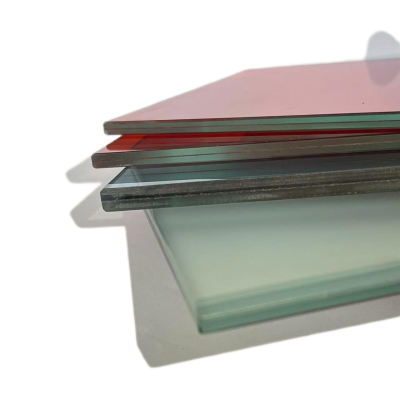What will happen if the tempered glass breaks?
What will happen if the tempered glass breaks? Does Tempered Glass Splash when it breaks ?
Tempered glass, due to its high strength and safety features, is widely used in fields such as construction, home decoration, and automobiles. In particular, it is commonly used in home renovations for shower rooms glass doors,glass windows, and more.
1. Characteristics of Tempered Glass
Tempered glass (also known as toughened glass or safety glass) is produced by subjecting ordinary glass to physical or chemical treatment, creating a compressive stress on the surface and tensile stress inside, which increases its strength and safety. The main characteristics of tempered glass include:
1. High Strength
The impact strength of tempered glass is 4-5 times than common glass, allowing it to withstand greater external forces such as impacts or wind pressure.
It has a high bending strength, making it suitable for use in load-bearing parts such as curtain walls and windows.
2. Safety
When tempered glass breaks, it shatters into small granules, with blunt edges. Unlike common glass, which produces sharp fragments, the safety of tempered glass is higher.
It meets the "Safety Glass for Building - Part 1: Tempered Glass" (GB 15763.2-2005) standard.
3. Thermal Stability
Tempered glass can withstand temperature differences of 200-300°C, making it suitable for environments that experience high temperatures or thermal cycling, such as shower room glass.
4. No Secondary Processing
Once tempered, the glass cannot be cut, drilled, or polished. Customization must be done before tempering.
5. Application Scenarios
Architecture: Curtain walls, windows, glass doors, partitions.
Home Furnishing: Shower rooms, glass coffee tables, cabinet doors.
Other: Automobile side windows, mobile phone screen protectors.
### 2. What Does Tempered Glass Look Like When it breaks?
1. Granular Fragments
When tempered glass breaks, it shatters into numerous small particles, resembling a honeycomb structure or small squares, typically with a diameter between 2-5 mm.
According to "GB 15763.2-2005," the number of fragments in a 50mm×50mm area after shattering should be between 40 and 150, with the edges being relatively rounded.
This characteristic means tempered glass is less likely to cause deep cuts when broken, making it far safer than common glass( which produces sharp, large shards).
2. Complete Fragmentation
Due to the internal stress balance, tempered glass, when subjected to excessive force (such as strong impacts or localized high temperatures), will shatter rapidly as a whole, rather than breaking in localized areas.
After shattering, the glass generally retains its original shape, and the fragments interlock, meaning they do not scatter immediately.
3. Typical Scenarios
Shower Room Glass: If tempered glass in the shower room shatters due to impact, it will break into small granules that accumulate on the ground, with no sharp edges.
Glass Doors: After shattering, tempered glass may form a "spider web" pattern, but the overall structure remains intact, and the fragments do not immediately fall.
Curtain Wall Glass: In high-rise buildings, tempered glass may shatter after impact, and the fragments may scatter due to wind or gravity, but they will mostly remain small.
### 3. Does Tempered Glass Shatter or Splash?
1. Possibility of Splashing
Low Risk of Splashing: When tempered glass breaks, the fragments tend to interlock with each other, and because the edges are rounded, the likelihood of them splashing is low. In most cases, the fragments will either fall directly or remain in place, unlike ordinary glass, which may splinter and scatter widely.
Special Cases: Tempered glass may experience slight splashing under the following circumstances:
Strong External Forces: If a heavy object strikes it at high speed or in the event of an explosion, fragments may be projected a few centimeters to a meter away.
Improper Installation: If the glass has tiny cracks at the edges or is not securely fixed, it may cause fragments to fly out when it shatters.
Thermal Shock: For instance, when the glass in a shower room is exposed to rapid temperature changes (hot and cold water), there might be minor splashing when it breaks.
2. Factors Affecting Splashing
Glass Thickness: Thicker tempered glass (8-12 mm) produces heavier fragments, causing them to fall over a shorter distance. Thinner glass (4-6 mm) produces lighter fragments, which may splash slightly further.
External collision method: A localized impact (such as a hammer strike) is more likely to cause splashing than uniform pressure (such as wind pressure).
Installation Environment: Glass fixed within a frame (such as a window) will have a smaller splashing area when it breaks, but frameless glass (such as a coffee table) may scatter more widely.
Film Coating: Tempered glass with an resistant-proof film will have its fragments adhered to the film when shattered, significantly reducing the likelihood of splashing.


































































































































































































